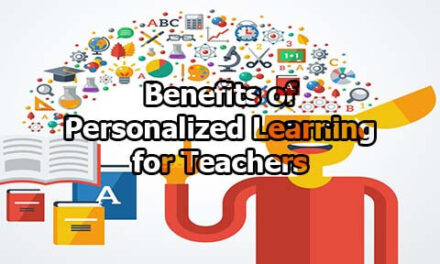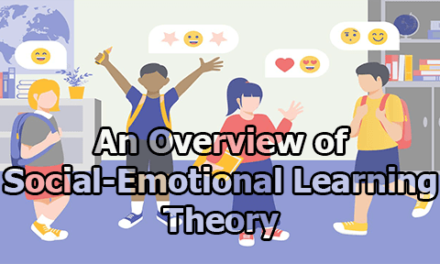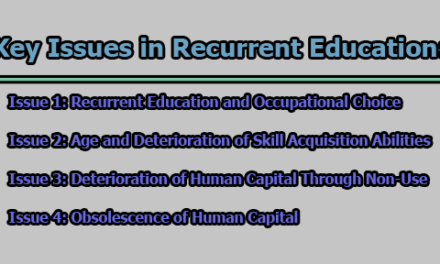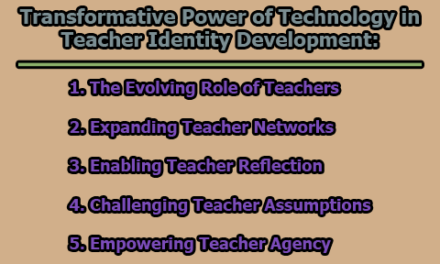The Impact of Teacher Diversity on Student Outcomes:
In the pursuit of educational equity and a brighter future for all students, the role of teacher diversity cannot be overstated. The classroom is a microcosm of the diverse world we inhabit, and when students see themselves reflected in their educators, profound transformations occur. Teacher diversity extends beyond mere representation; it brings unique perspectives, empathy, and culturally responsive teaching into the educational landscape. This article explores the impact of teacher diversity on student outcomes: bridging the gap for a brighter future.
1. Defining Teacher Diversity:
Diversity within the teaching profession is a multifaceted concept that encompasses various dimensions, including demographic diversity, diversity of thought, and teaching styles. Each dimension contributes uniquely to the richness of the educational experience and has implications for student outcomes.
1.1 Demographic Diversity: Demographic diversity in the teaching workforce refers to the representation of individuals from various racial, ethnic, gender, socioeconomic, and cultural backgrounds among educators. This dimension is often the most apparent form of diversity in schools and is readily quantifiable through demographic characteristics such as race, ethnicity, and gender.
The importance of demographic diversity among teachers is underscored by numerous studies. Research by Dee (2004) found that students from underrepresented minority groups tend to benefit academically when taught by teachers who share their racial or ethnic background. This phenomenon, often referred to as “racial matching,” can enhance student-teacher relationships, foster a sense of belonging, and positively influence academic outcomes.
Moreover, Hoxby and Leigh (2004) argued that teachers from diverse backgrounds can serve as role models for students, inspiring them to pursue educational and career paths they might not have otherwise considered. Representation matters, and having educators who reflect the diversity of the student body can lead to increased motivation and aspirations among students from underrepresented groups.
1.2 Diversity of Thought and Teaching Styles: Beyond demographic diversity, diversity of thought and teaching styles constitutes a crucial aspect of teacher diversity. This dimension encompasses the range of perspectives, pedagogical approaches, and educational philosophies that teachers bring to the classroom. It emphasizes the uniqueness of each educator’s professional identity.
Teachers with diverse backgrounds, experiences, and educational philosophies offer students a broader spectrum of instructional methods. Darling-Hammond (2017) suggests that this diversity can lead to increased creativity in lesson planning and a greater ability to adapt teaching strategies to meet the varied needs of students. In essence, teachers with diverse approaches can tailor their instruction to reach a more extensive range of learners effectively.
Additionally, diverse teaching styles can stimulate critical thinking and foster a more inclusive learning environment. Banks (2006) argues that teachers who incorporate diverse perspectives into their teaching can help students develop cultural competency and a deeper understanding of the complexities of the world around them. This, in turn, can prepare students to thrive in a globalized society.
1.3 Benefits of a Diverse Teaching Staff: A diverse teaching staff brings a multitude of benefits to the educational system and the broader society. Some of these benefits include:
- Enhanced Learning Experiences: Diverse teaching staff can expose students to a variety of viewpoints, teaching methods, and cultural contexts, making the learning experience more engaging and enriching (Nieto, 2004).
- Reduced Stereotyping and Bias: Exposure to diverse educators can challenge stereotypes and biases, fostering a more inclusive and accepting school culture (Banks, 2006).
- Improved Communication: Teachers who share a cultural or linguistic background with their students may facilitate more effective communication, leading to better student-teacher relationships and increased academic achievement (Dee, 2004).
- Culturally Relevant Curriculum: Diverse teachers are more likely to incorporate diverse perspectives into the curriculum, creating a more inclusive and culturally relevant educational experience (Ladson-Billings, 1995).
- Global Preparedness: Exposure to diverse teaching styles and worldviews can prepare students to navigate an interconnected global society with greater cultural competence (Darling-Hammond, 2017).
2. The Role of Teacher-Student Cultural Matching:
2.1 Definition of Cultural Matching: Cultural matching, in the context of education, refers to the alignment or congruence between the cultural background, experiences, and identities of teachers and their students. It involves teachers and students sharing common cultural traits, such as race, ethnicity, language, religion, or socioeconomic background. Cultural matching goes beyond demographic similarity; it encompasses a deeper understanding and appreciation of each other’s cultural perspectives and experiences.
2.2 The Impact of Cultural Matching on Student Engagement: The relationship between teacher-student cultural matching and student engagement is a well-documented and critical aspect of education. Numerous studies have explored how cultural matching influences the level of student engagement, which, in turn, affects academic achievement and overall educational experiences.
One key finding is that students tend to be more engaged in the learning process when they perceive their teachers as culturally sensitive and relatable. This enhanced engagement manifests in several ways:
- Increased Classroom Participation: Students who share cultural similarities with their teachers are more likely to actively participate in class discussions and activities (Howard, 2003).
- Improved Communication: Cultural matching can facilitate effective communication, as students may feel more comfortable expressing their thoughts and concerns to teachers who share their cultural background (Gay, 2000).
- Positive Teacher-Student Relationships: Cultural matching often leads to stronger, more positive teacher-student relationships characterized by trust and mutual respect (Gloria & Robinson Kurpius, 2001).
- Enhanced Motivation: Students who see teachers as relatable role models may exhibit higher levels of motivation to succeed academically and pursue higher education (Ferguson, 2003).
Moreover, culturally matched teachers are often better equipped to select instructional materials and teaching strategies that resonate with the cultural experiences and perspectives of their students (Ladson-Billings, 1994). This tailoring of instruction can further enhance student engagement and learning outcomes.
2.3 Importance for Underrepresented Students: Teacher-student cultural matching is of particular significance for underrepresented students, who have historically faced challenges and disparities in education. For these students, having teachers who share their cultural background can be transformative.
Research by Dee (2004) found that underrepresented minority students who are taught by teachers of the same racial or ethnic background tend to experience reduced absenteeism and disciplinary issues. These students are also more likely to feel a sense of belonging within the school community.
Furthermore, the presence of culturally matched teachers can challenge stereotypes and biases that underrepresented students may encounter. It fosters a more inclusive and tolerant classroom environment where all students are valued and appreciated for their unique perspectives (Banks, 2006).
3. Academic Outcomes and Teacher Diversity:
3.1 Correlations Between Teacher Diversity and Academic Performance: Research has consistently demonstrated a correlation between teacher diversity and improved academic performance, particularly for students from underrepresented backgrounds. When teachers share the same racial or ethnic background as their students, it can lead to several positive outcomes for academic achievement.
Dee’s (2004) study, which focused on the effects of teacher diversity, found that Black students who had Black teachers during their elementary school years were more likely to graduate high school and expressed a greater interest in attending college. A similar study by Jackson (2018) revealed that Black students who had at least one Black teacher in elementary school were more likely to enroll in college.
These findings suggest that teacher diversity can serve as a motivating factor for students from underrepresented groups, inspiring them to pursue higher education and potentially improving long-term career prospects.
3.2 Improved Standardized Test Scores: One of the most significant academic outcomes associated with teacher diversity is the improvement in standardized test scores. Several studies have shown that students, particularly those from underrepresented backgrounds, tend to perform better on standardized tests when taught by teachers who share their racial or ethnic background.
For instance, Dee’s research (2004) found that Black students taught by Black teachers scored higher on standardized tests in both math and reading compared to their peers taught by non-Black teachers. Similar results were reported by Hoxby and Leigh (2004), who discovered that Black students’ test scores improved significantly when they had at least one Black teacher during elementary school.
These findings highlight the potential for teacher diversity to narrow the achievement gap, which has been a longstanding challenge in education. Improved test scores can open doors to advanced educational opportunities and future success for underrepresented students.
3.3 Higher Graduation Rates: Another significant academic outcome associated with teacher diversity is higher graduation rates among students, particularly those from historically marginalized backgrounds. The presence of diverse teachers can play a role in supporting students throughout their educational journey, ultimately leading to increased high school graduation rates.
Research conducted by Carrell, Sacerdote, and West (2013) found that Black male students who had at least one Black teacher in elementary school were more likely to graduate from high school. The study suggested that having a same-race teacher during the early years of schooling could lead to better long-term academic outcomes.
Furthermore, a study by Gershenson, Holt, and Papageorge (2016) revealed that Black students who had at least one Black teacher in grades 3-5 were significantly more likely to graduate high school. This effect was particularly pronounced for Black males, highlighting the importance of teacher diversity in fostering positive academic trajectories.
3.4 Increased Likelihood of Pursuing Higher Education: Teacher diversity not only influences immediate academic outcomes but also shapes students’ long-term educational aspirations. Research by Dee (2004) found that Black students who had at least one Black teacher in elementary school were more likely to express an interest in attending college. This increased likelihood of pursuing higher education can have far-reaching implications for students’ future success and career opportunities.
The presence of diverse teachers serves as an important source of inspiration and mentorship, encouraging underrepresented students to envision themselves as college-bound and capable of achieving their educational goals. It reinforces the belief that higher education is attainable and worthwhile.
4. Social and Emotional Development:
4.1 The Role of Teachers as Role Models and Mentors: Teachers play a pivotal role in shaping the social and emotional development of their students. They serve as not only educators but also as role models and mentors. When teachers come from diverse backgrounds, they can have a profound influence on students’ social and emotional growth.
- Teachers as Role Models: Diverse teachers serve as visible role models for students, particularly those from underrepresented backgrounds. Seeing educators who share their cultural or ethnic background can inspire students to envision their own paths to success (Fergus et al., 2005). This representation can instill a sense of possibility and ambition, motivating students to strive for their full potential.
- Teachers as Mentors: Beyond academic instruction, teachers often serve as mentors who provide guidance, support, and encouragement to their students. For underrepresented students, having a mentor who understands their unique challenges and experiences can be transformative (Sánchez, 2019). Mentoring relationships with diverse teachers can boost students’ confidence, self-esteem, and overall well-being.
4.2 Developing Empathy and Respect for Diverse Perspectives: One of the invaluable lessons that diverse teachers can impart to their students is the development of empathy and respect for diverse perspectives. Exposure to teachers from various backgrounds can broaden students’ horizons and help them appreciate the richness of diversity in society.
- Cultivating Empathy: Diverse teachers can facilitate classroom discussions and activities that promote empathy and understanding of different cultures, experiences, and viewpoints (Gay, 2010). These experiences encourage students to step into the shoes of others, fostering greater empathy and compassion.
- Fostering Respect: Teachers who embrace and celebrate diversity create inclusive classroom environments where students learn to respect and value differences (Banks, 2006). Students are more likely to engage in open dialogues, challenge stereotypes, and develop a sense of belonging when they feel their perspectives are valued.
- Challenging Bias: Diverse teachers are well-positioned to challenge biases and prejudices that students may hold. By providing diverse perspectives and fostering critical thinking, these educators empower students to confront stereotypes and promote social justice (Ladson-Billings, 1995).
4.3 Support for Students from Underrepresented Backgrounds: For students from underrepresented backgrounds, the presence of diverse teachers can be a source of invaluable support.
- Cultural Understanding: Diverse teachers often possess a deeper understanding of the cultural nuances and challenges that students from similar backgrounds may face. This understanding enables teachers to provide culturally relevant support and guidance (Howard, 2003).
- Safe Spaces: Diverse teachers can create safe and inclusive spaces where students feel comfortable expressing themselves and discussing their unique experiences (Gay, 2010). These environments foster a sense of belonging and reduce feelings of isolation.
- Academic Advocacy: Diverse teachers can advocate for students from underrepresented backgrounds, helping to ensure that their academic needs are met and that they receive equitable opportunities (Gay, 2010). This advocacy can lead to improved academic outcomes and increased confidence in navigating the educational system.
5. Reducing Achievement Gaps:
5.1 The Persistence of Achievement Gaps: Achievement gaps, often referred to as educational disparities, persist as a significant challenge within the education system. These gaps are disparities in academic performance, educational attainment, and other educational outcomes that exist between various student groups, such as racial and ethnic groups, socioeconomic classes, and students with disabilities (Reardon, 2013).
Persistent achievement gaps are a reflection of systemic inequalities in the education system and broader society. Factors contributing to these gaps include disparities in funding, unequal access to high-quality teachers and resources, and the cumulative effects of poverty and discrimination (Reardon, 2013).
5.2 The Potential of Teacher Diversity to Reduce Gaps: Teacher diversity has emerged as a promising strategy to address and reduce achievement gaps. Several mechanisms underpin the potential of teacher diversity in narrowing these disparities:
- Role Modeling and High Expectations: Diverse teachers serve as role models who inspire students from underrepresented backgrounds to aspire to higher levels of academic achievement (Hoxby & Leigh, 2004). When students see educators who look like them achieving success, they are more likely to set ambitious academic goals.
- Cultural Competency: Diverse teachers bring cultural competency to the classroom, which enables them to create more inclusive and relevant learning environments (Nieto, 2004). This, in turn, can lead to increased engagement and improved academic outcomes, especially among minority students.
- Improved Student-Teacher Relationships: Cultural matching between teachers and students can foster positive student-teacher relationships characterized by trust and open communication (Dee, 2004). Such relationships provide a supportive foundation for learning and achievement.
- Personalized Instruction: Diverse teachers are often better equipped to tailor instruction to meet the unique needs and learning styles of their students (Banks, 2006). This personalized approach can lead to improved learning outcomes, particularly for students who have historically struggled.
- Broadened Curriculum: Diverse teachers are more likely to include diverse perspectives and voices in the curriculum, promoting a more comprehensive understanding of history, culture, and society (Ladson-Billings, 1995). This can lead to increased engagement and a sense of relevance among students.
5.3 Complementary Strategies for Achieving Educational Equity: While teacher diversity is a crucial component of efforts to reduce achievement gaps, it is not a standalone solution. Complementary strategies are necessary to address the systemic inequalities that perpetuate educational disparities. These strategies include:
- Equitable Resource Allocation: Ensuring that schools in underserved communities receive adequate funding and resources is essential (Reardon, 2013). This includes access to quality instructional materials, facilities, and extracurricular activities.
- High-Quality Curriculum: Developing and implementing a high-quality, culturally relevant curriculum that reflects the diversity of the student population is vital (Ladson-Billings, 1995). This can help engage students and provide a more equitable educational experience.
- Effective Teaching Practices: Promoting evidence-based teaching practices that are effective for all students, regardless of background, is crucial (Darling-Hammond, 2017). This includes professional development for teachers to enhance their pedagogical skills.
- Early Childhood Education: Expanding access to high-quality early childhood education programs, especially for disadvantaged children, can help narrow achievement gaps before they emerge (Heckman, 2008).
- Parent and Community Engagement: Fostering partnerships between schools, parents, and the community can create a supportive network for students, providing resources and assistance beyond the classroom (Henderson & Mapp, 2002).
6. Teacher Diversity and a More Inclusive Curriculum:
6.1 Enriching the Curriculum with Diverse Perspectives: A key advantage of teacher diversity is its potential to enrich the curriculum with a wide range of diverse perspectives and experiences. Diverse teachers bring their unique cultural, racial, and ethnic backgrounds into the classroom, allowing them to infuse these perspectives into their teaching.
- Cultural Relevance: Diverse teachers are more likely to incorporate materials, literature, and historical events that reflect the cultural diversity of their students (Ladson-Billings, 1995). This inclusion makes the curriculum more relatable and engaging for students from various backgrounds.
- Global Awareness: Diverse teachers can introduce global perspectives into the curriculum, expanding students’ understanding of international cultures, societies, and issues (Banks, 2006). This global awareness is essential in an increasingly interconnected world.
- Diverse Voices: Having teachers with diverse backgrounds exposes students to a wider array of voices and viewpoints, fostering critical thinking and a deeper appreciation for the complexity of the world (Gay, 2010). This exposure encourages students to explore multiple perspectives and challenge stereotypes.
6.2 Fostering Inclusivity and Relevance: Teacher diversity also plays a crucial role in fostering inclusivity and relevance within the curriculum. Inclusive curricula are designed to ensure that all students, regardless of their backgrounds, feel valued, represented, and engaged in the learning process.
- Representation Matters: Diverse teachers serve as visible role models for students from underrepresented backgrounds (Fergus et al., 2005). Seeing educators who share their racial, ethnic, or cultural background can make students feel more valued and included in the educational environment.
- Safe and Inclusive Spaces: Diverse teachers create safe and inclusive classroom environments where students feel comfortable expressing their thoughts and identities (Gay, 2010). In such spaces, students are more likely to participate actively, ask questions, and engage in discussions.
- Culturally Responsive Teaching: Diverse teachers are often more attuned to the needs and experiences of their students, allowing them to employ culturally responsive teaching strategies (Gay, 2010). This approach acknowledges and values students’ cultural backgrounds, making learning more meaningful and relevant.
6.3 Addressing Issues of Social Justice and Equity in the Curriculum: One of the critical roles of teacher diversity is to address issues of social justice and equity in the curriculum. This involves challenging systemic biases, promoting equity, and empowering students to become agents of positive social change.
- Critical Pedagogy: Diverse teachers are more likely to engage in critical pedagogy, which encourages students to examine issues of power, privilege, and oppression (Freire, 1970). This approach equips students with the tools to analyze social injustices and advocate for equity.
- Inclusive Literature: Diverse teachers often include literature and texts that explore themes of social justice, equity, and identity in the curriculum (Nieto, 2004). These texts encourage critical thinking and promote discussions about important societal issues.
- Civic Engagement: Diverse teachers can inspire students to become active and informed citizens who advocate for social justice and equity (Banks, 2006). This engagement extends beyond the classroom and has a broader impact on society.
7. Challenges and Barriers:
7.1 Recruitment and Retention Challenges:
- Recruitment Challenges: Recruiting a diverse teaching workforce can be a significant challenge. The education sector often faces stiff competition with other fields, potentially leading to shortages of qualified candidates from underrepresented backgrounds (Ingersoll & Strong, 2011). Factors such as low salaries and limited career advancement opportunities can deter individuals, particularly minorities, from pursuing teaching careers.
- Retention Challenges: Once diverse teachers are recruited, retaining them can be equally challenging. Diverse educators may face isolation or limited opportunities for professional growth and leadership (Carver-Thomas & Darling-Hammond, 2017). High turnover rates among diverse teachers can hinder long-term efforts to increase teacher diversity.
7.2 Unequal Distribution of Diverse Educators: The distribution of diverse educators across schools and districts is often unequal. Research has shown that schools serving predominantly low-income and minority students are less likely to have diverse teaching staff (Ingersoll & Strong, 2011). This unequal distribution exacerbates existing disparities in educational opportunities.
Inequitable distribution can result from various factors, including disparities in funding, working conditions, and the attractiveness of schools in different communities (Carver-Thomas & Darling-Hammond, 2017). Teachers from underrepresented backgrounds may be more concentrated in schools with fewer resources and higher challenges.
7.3 Implicit Bias in Hiring: Implicit bias in hiring processes poses a significant barrier to increasing teacher diversity. Implicit bias refers to unconscious, automatic biases that individuals may hold based on characteristics such as race, gender, or ethnicity (Devine et al., 2012). These biases can influence decision-making during the hiring process, potentially disadvantaging candidates from underrepresented backgrounds.
Research has shown that implicit bias can lead to the preference of candidates who match the demographic characteristics of the majority group, perpetuating the underrepresentation of diverse educators (Moss-Racusin et al., 2012). Addressing implicit bias in hiring requires awareness, training, and strategies to mitigate its impact.
7.4 The Role of Systemic Inequities: Systemic inequities in education and society at large play a pivotal role in perpetuating the challenges and barriers to teacher diversity. Historical and structural factors, including disparities in educational funding, housing, and socioeconomic opportunities, contribute to the underrepresentation of minorities in the teaching profession (Darling-Hammond, 2012).
Addressing systemic inequities requires a multifaceted approach that includes policy changes, targeted recruitment initiatives, and efforts to create inclusive and supportive learning environments. Systemic change is essential for breaking the cycle of inequality that affects both teacher diversity and student outcomes (Ladson-Billings, 2006).
8. Promoting Teacher Diversity:
8.1 Targeted Recruitment Initiatives:
- Targeted Outreach: Schools and districts can engage in targeted recruitment initiatives aimed at attracting candidates from underrepresented backgrounds. This involves actively reaching out to universities, colleges, and teacher preparation programs with diverse student populations (Carver-Thomas & Darling-Hammond, 2017).
- Community Partnerships: Establishing partnerships with local community organizations, cultural centers, and advocacy groups can facilitate the recruitment of diverse teaching candidates (Villegas & Irvine, 2010). These organizations can help identify potential educators and provide support during the hiring process.
8.2 Scholarships and Financial Incentives:
- Financial Support: Scholarships and financial incentives can be powerful tools to encourage individuals from underrepresented backgrounds to pursue teaching careers. These programs can alleviate the financial burden of teacher preparation programs and make the profession more accessible (Humphrey et al., 2019).
- Tuition Forgiveness: Some regions offer tuition forgiveness programs for teachers who commit to working in high-need schools or subject areas. These programs can attract individuals who are passionate about making a difference in underserved communities (Humphrey et al., 2019).
8.3 Mentorship and Support Programs:
- Mentorship Programs: Establishing mentorship programs for novice teachers, particularly those from underrepresented backgrounds, can improve retention rates. Mentor teachers can provide guidance, emotional support, and professional development opportunities (Ingersoll & Strong, 2011).
- Professional Development: Offering ongoing professional development and support tailored to the needs of diverse educators can help them thrive in their roles. Such programs can enhance cultural competency and teaching effectiveness (Carver-Thomas & Darling-Hammond, 2017).
8.4 Cultural Competency Training:
- Cultural Competency Workshops: Providing cultural competency training for all educators can help create inclusive and culturally responsive classrooms. These workshops enable teachers to better understand and address the needs of diverse student populations (Gay, 2002).
- Embedding Cultural Competency: Teacher preparation programs can embed cultural competency training into their curriculum to ensure that all educators graduate with the skills to work effectively in diverse classrooms (Villegas & Irvine, 2010).
8.5 Policy Changes and Advocacy Efforts:
- Policy Reform: Policymakers can advocate for policy changes that promote teacher diversity, such as allocating funds for targeted recruitment efforts, offering incentives for diverse candidates, and addressing systemic inequities in education (Carver-Thomas & Darling-Hammond, 2017).
- Advocacy Coalitions: Advocacy groups and organizations can collaborate to raise awareness about the importance of teacher diversity and advocate for policy changes at the local, state, and national levels (Boser et al., 2014). These coalitions can amplify the collective voice for change.
8.6 Encouraging Diverse Leadership:
- Leadership Opportunities: Encouraging diverse educators to pursue leadership roles within schools and districts is essential. Diverse leadership can inspire others and help shape inclusive policies and practices (Ladson-Billings, 2006).
- Leadership Development: Providing leadership development opportunities, mentoring, and pathways for advancement can help diverse educators ascend to leadership positions (Carver-Thomas & Darling-Hammond, 2017).
In conclusion, in a world marked by diversity, inclusion, and the shared aspiration for educational equity, teacher diversity stands as a beacon of hope. The impact of teacher diversity on student outcomes is not merely a concept; it is a tangible reality that has the power to transform lives and illuminate the path toward a brighter future. From inspiring academic achievement to fostering empathy, respect, and social justice, diverse teachers play a pivotal role in shaping the minds and hearts of the next generation. However, as we navigate the challenges of recruitment, retention, and systemic inequities, it becomes evident that the journey towards a more representative teaching workforce is a collective endeavor. By promoting teacher diversity through targeted initiatives, scholarships, mentorship, and policy advocacy, we can bridge the gap and pave the way for a world where every student’s potential is realized, regardless of their background. The promise of a brighter future in education lies within the mosaic of teacher diversity, and it is our collective responsibility to nurture and celebrate this transformational force.
Frequently Asked Questions [FAQs]:
What is teacher diversity, and why is it important?
Teacher diversity refers to the presence of educators from various racial, ethnic, cultural, and demographic backgrounds in the teaching profession. It is important because it enriches the educational experience by bringing diverse perspectives, role models, and cultural competency into the classroom. Teacher diversity has been shown to positively impact student outcomes and foster inclusivity.
How does teacher diversity affect academic outcomes?
Teacher diversity can positively impact academic outcomes by improving standardized test scores, increasing graduation rates, and inspiring students to pursue higher education. Studies have shown that students, particularly those from underrepresented backgrounds, tend to perform better academically when taught by teachers who share their racial or ethnic background.
What is the role of teacher-student cultural matching in student engagement?
Teacher-student cultural matching refers to the alignment between a student’s cultural background and that of their teacher. This alignment can enhance student engagement by fostering a sense of belonging, trust, and understanding in the classroom. Students are more likely to be actively engaged when they see their own cultural experiences reflected in the curriculum and teaching approach.
How does teacher diversity contribute to social and emotional development?
Teacher diversity contributes to social and emotional development by providing students with diverse role models and mentors, fostering empathy and respect for diverse perspectives, and offering support for students from underrepresented backgrounds. Diverse teachers create safe and inclusive learning environments where students can express themselves and explore their identities.
What is the connection between teacher diversity and reducing achievement gaps?
Teacher diversity has the potential to reduce achievement gaps by serving as role models, offering culturally relevant instruction, and addressing the unique needs of underrepresented students. Diverse teachers can motivate students to excel academically, improve their self-esteem, and narrow the disparities in academic achievement.
What strategies can be employed to promote teacher diversity?
Promoting teacher diversity involves targeted recruitment initiatives, scholarships and financial incentives, mentorship and support programs, cultural competency training, policy changes, advocacy efforts, and encouraging diverse educators to pursue leadership roles. These strategies aim to attract, retain, and empower diverse individuals in the teaching profession.
What challenges and barriers exist in increasing teacher diversity?
Challenges in increasing teacher diversity include recruitment and retention difficulties, unequal distribution of diverse educators, implicit bias in hiring, and systemic inequities in education. These barriers can hinder efforts to create a more representative teaching workforce.
How can policymakers and communities contribute to promoting teacher diversity?
Policymakers and communities can contribute to promoting teacher diversity by advocating for policy changes that support recruitment and retention initiatives, providing financial incentives, offering mentorship programs, addressing implicit bias, and addressing systemic inequities in education. Collaboration and advocacy at local, state, and national levels are essential to create a more diverse teaching workforce.
What is the overall impact of teacher diversity on a brighter future in education?
Teacher diversity is a transformative force in education, serving as a bridge to a brighter future characterized by educational equity, inclusivity, and improved student outcomes. It brings diverse perspectives, empathy, and cultural responsiveness into the classroom, fostering a more inclusive and equitable educational experience for all students.
References:
- Banks, J. A. (2006). Diversity and citizenship education: Global perspectives. Jossey-Bass.
- Boser, U., Chingos, M. M., & Papageorge, N. W. (2014). To retain teachers, focus on principals. Brown Center Chalkboard.
- Carrell, S. E., Sacerdote, B. I., & West, J. E. (2013). From natural variation to optimal policy? The importance of endogenous peer group formation. Econometrica, 81(3), 855-882.
- Carver-Thomas, D., & Darling-Hammond, L. (2017). Teacher turnover: Why it matters and what we can do about it. Learning Policy Institute.
- Darling-Hammond, L. (2012). Creating a comprehensive system for evaluating and supporting effective teaching. Stanford Center for Opportunity Policy in Education.
- Darling-Hammond, L. (2017). Teacher education around the world: What can we learn from international practice? European Journal of Teacher Education, 40(3), 291-309.
- Dee, T. S. (2004). Teachers, race, and student achievement in a randomized experiment. The Review of Economics and Statistics, 86(1), 195-210.
- Devine, P. G., Forscher, P. S., Austin, A. J., & Cox, W. T. (2012). Long-term reduction in implicit race bias: A prejudice habit-breaking intervention. Journal of Experimental Social Psychology, 48(6), 1267-1278.
- Freire, P. (1970). Pedagogy of the oppressed. Continuum.
- Ferguson, R. F. (2003). Teachers’ perceptions and expectations and the Black-White test score gap. Urban Education, 38(4), 460-507.
- Fergus, E., Noguera, P. A., & Martin, M. (2005). Schooling for resilience: Improving the life trajectories of African American and Latino boys. Harvard Education Press.
- Gay, G. (2000). Culturally responsive teaching: Theory, research, and practice. Teachers College Press.
- Gay, G. (2002). Preparing for culturally responsive teaching. Journal of Teacher Education, 53(2), 106-116.
- Gay, G. (2010). Culturally responsive teaching: Theory, research, and practice (2nd ed.). Teachers College Press.
- Gershenson, S., Holt, S. B., & Papageorge, N. W. (2016). Who believes in me? The effect of student-teacher demographic match on teacher expectations. Economics of Education Review, 52, 209-224.
- Gloria, A. M., & Robinson Kurpius, S. E. (2001). Influences of self-beliefs, social support, and comfort in the university environment on the academic nonpersistence decisions of American Indian undergraduates. Cultural Diversity and Ethnic Minority Psychology, 7(1), 88-102.
- Heckman, J. J. (2008). Schools, skills, and synapses. Economic Inquiry, 46(3), 289-324.
- Henderson, A. T., & Mapp, K. L. (2002). A new wave of evidence: The impact of school, family, and community connections on student achievement. National Center for Family & Community Connections with Schools.
- Howard, T. C. (2003). Culturally relevant pedagogy: Ingredients for critical teacher reflection. Theory into Practice, 42(3), 195-202.
- Hoxby, C. M., & Leigh, A. (2004). Pulled away or pushed out? Explaining the decline of teacher aptitude in the United States. American Economic Review, 94(2), 236-240.
- Humphrey, D. C., Wechsler, M. E., & Hough, H. J. (2019). Cultivating diversity and equity: A case for institutional transformation in teacher education. Teachers College Record, 121(9), 1-32.
- Ingersoll, R. M., & Strong, M. (2011). The impact of induction and mentoring programs for beginning teachers: A critical review of the research. Review of Educational Research, 81(2), 201-233.
- Jackson, C. K. (2018). Does school spending matter? The new literature on an old question. National Bureau of Economic Research.
- Ladson-Billings, G. (1994). The dreamkeepers: Successful teachers of African American children. Jossey-Bass.
- Ladson-Billings, G. (1995). But that’s just good teaching! The case for culturally relevant pedagogy. Theory into Practice, 34(3), 159-165.
- Ladson-Billings, G. (2006). From the achievement gap to the education debt: Understanding achievement in U.S. schools. Educational Researcher, 35(7), 3-12.
- Moss-Racusin, C. A., Dovidio, J. F., Brescoll, V. L., Graham, M. J., & Handelsman, J. (2012). Science faculty’s subtle gender biases favor male students. Proceedings of the National Academy of Sciences, 109(41), 16474-16479.
- Nieto, S. (2004). Affirmation, solidarity, and critique: Moving beyond tolerance in multicultural education. Multicultural Education, 11(3), 2-7.
- Reardon, S. F. (2013). The widening academic achievement gap between the rich and the poor: New evidence and possible explanations. In G. J. Duncan & R. J. Murnane (Eds.), Whither Opportunity? Rising Inequality, Schools, and Children’s Life Chances (pp. 91-116). Russell Sage Foundation.
- Sánchez, B. (2019). Racially and ethnically diverse teachers and their students’ social and emotional competencies. Educational Psychology, 39(7), 846-861.
- Villegas, A. M., & Irvine, J. J. (2010). Diverse families, desirable schools: Public Montessori in the era of school choice. Teachers College Press.

Library Lecturer at Nurul Amin Degree College










